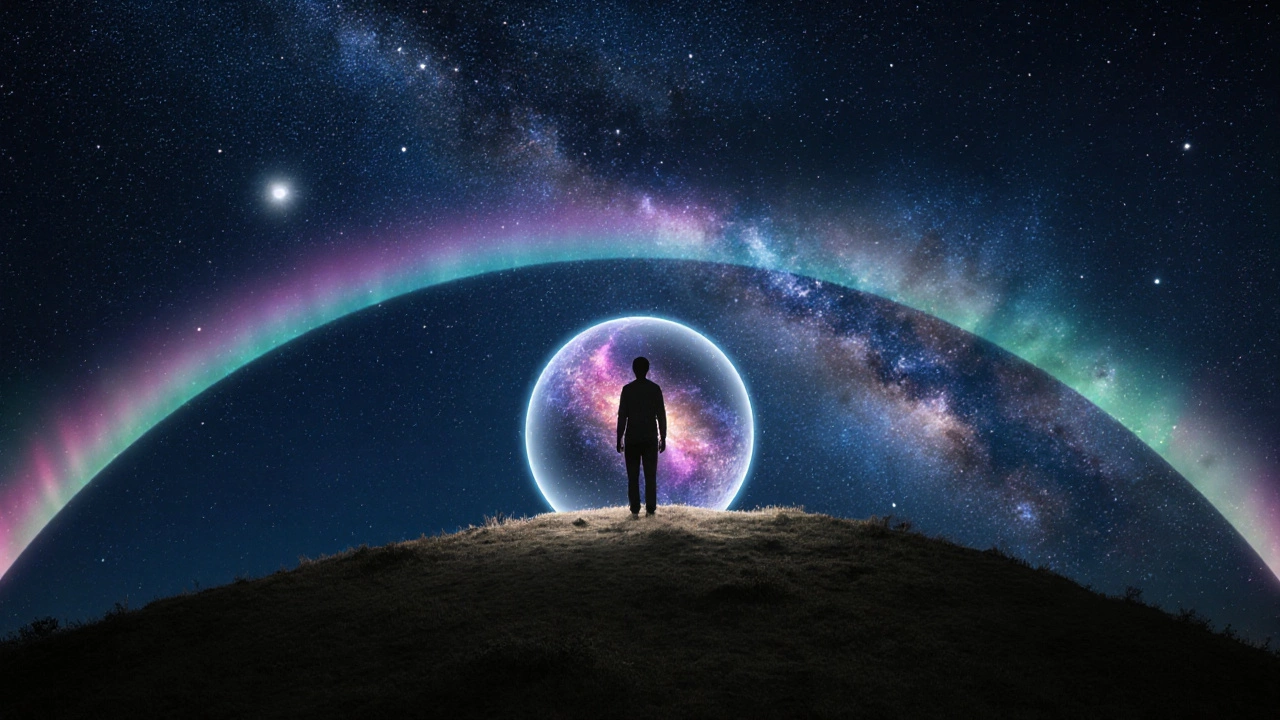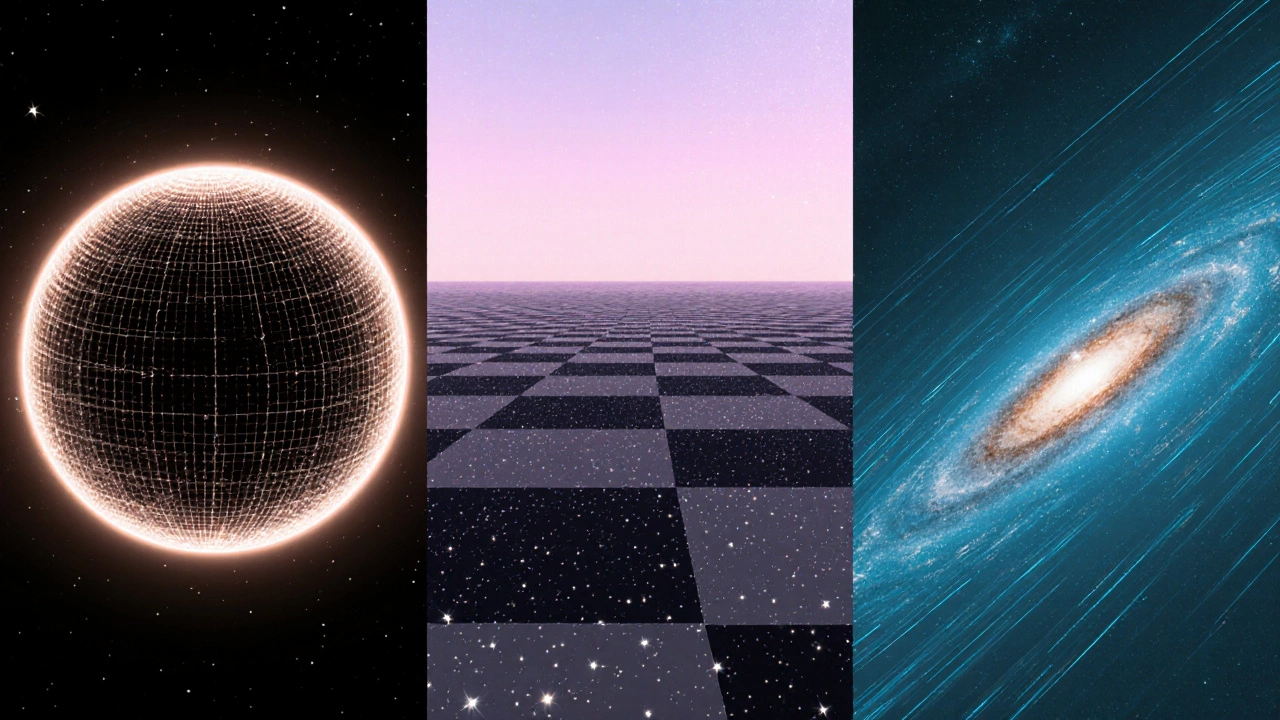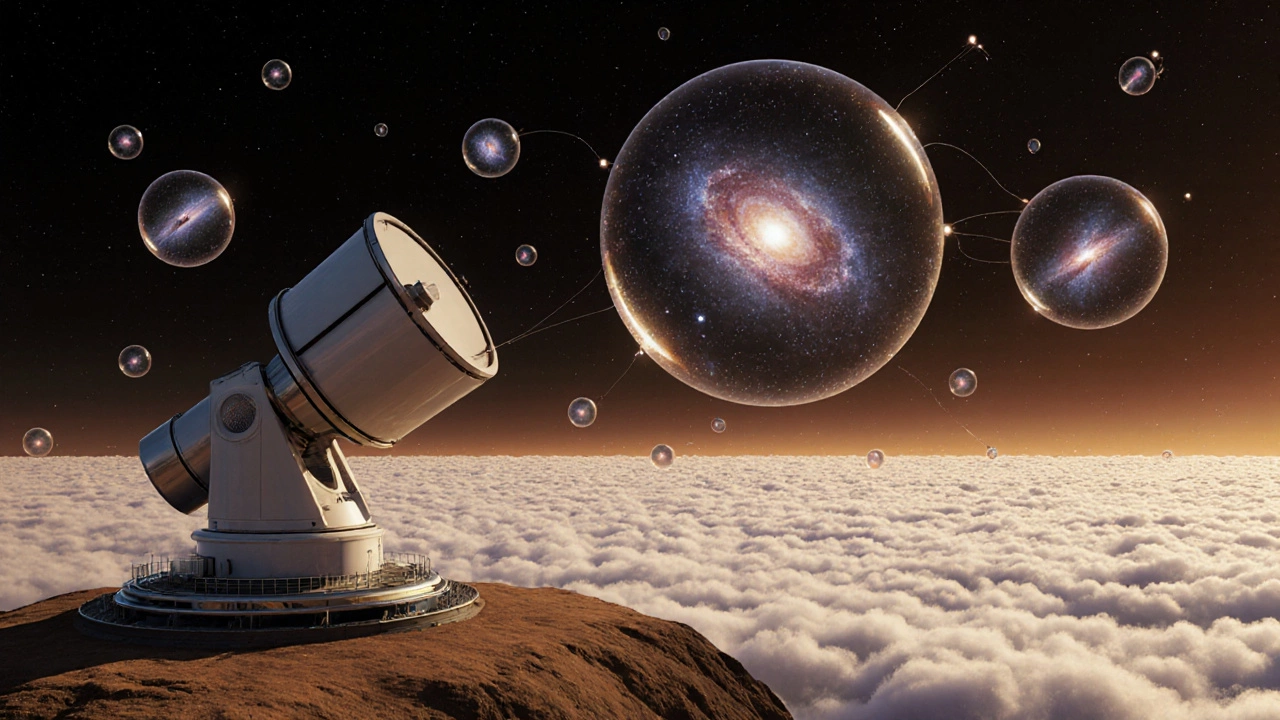Is Space Infinite? Exploring the Limits of the Cosmos
 Oct, 25 2025
Oct, 25 2025
Universe Size Calculator
Observable vs Total Universe
This calculator helps you understand the relationship between the observable universe (what we can see) and the potential size of the total universe.
Results
When astronomers talk about the Universe is the totality of space, time, matter and energy, they’re tackling a question that’s as old as philosophy: does it go on forever?
Defining "space" and why it matters
First, let clear up what we mean by Space is the three‑dimensional void that contains all galaxies, stars, and planets. It isn’t just an empty backdrop; it’s a dynamic arena that expands, contracts, and warps under the influence of gravity and dark energy. Without a solid definition, any debate about its size falls apart.
The observable universe: our current horizon
Our instruments can only see out to the Observable Universe is the spherical region about 46.5 billion light‑years in radius that light has reached since the Big Bang. That sphere contains roughly 2 trillion galaxies, but it’s just a patch of a potentially much larger whole. Think of it as the part of a forest you can see from a hilltop-just because the trees you see stop doesn’t mean the forest ends.
Cosmic curvature: flat, closed, or open?
Einstein’s general relativity links the universe’s geometry to its total mass‑energy. If the density is higher than a critical value, space curves back on itself, forming a closed, finite shape like a sphere. If it’s lower, space is open and infinitely expanding like a saddle. Observations of the Cosmic Microwave Background is the afterglow radiation from about 380 000 years after the Big Bang-the faint microwave hiss filling the sky-show a nearly flat geometry, within about 0.4% of perfect flatness. A flat universe can be either infinite or so large that it appears flat within our observable limits.
Infinite or finite? The leading models
Two families of models dominate the debate:
- Finite models-closed universes that eventually stop expanding and may even recollapse, or flat universes that loop back on themselves (a torus‑like topology).
- Infinite models-open or perfectly flat universes that stretch forever.
Both families match current data, thanks to the tiny margin of error in the curvature measurement. That’s why cosmologists turn to other clues.
Dark energy and the accelerating expansion
The discovery in 1998 that distant supernovae are dimmer than expected introduced Dark Energy is a mysterious repulsive force driving the accelerated expansion of the universe. Its density appears constant over time, a property that would push an infinite universe to expand forever at an accelerating rate. In a finite, closed universe, dark energy would eventually dominate, causing space to expand faster than any curvature could pull it back together, effectively making the universe behave as if it were infinite.

Inflation theory: stretching space beyond sight
Shortly after the Big Bang, a burst of exponential expansion-called Inflation Theory is a rapid expansion phase that smoothed out irregularities and stretched space to macroscopic scales-inflated a tiny region to astronomical size. Inflation predicts a universe far larger than the observable portion, potentially infinite. Yet some inflation models allow a finite but extremely large patch that loops back on itself.
Multiverse ideas: Beyond our own universe
Some theorists propose a Multiverse is a collection of many separate universes, each with its own physical constants and laws. If true, our universe could be just one bubble in a vast frothy sea, making the question of “infinite space” moot-space would be infinite across the multiverse, but each bubble might be finite. While speculative, multiverse hypotheses arise naturally from certain inflation scenarios and string theory landscapes.
Measuring the universe: the role of the Hubble constant
The Hubble Constant is the rate at which galaxies recede from each other, expressed in km s⁻¹ Mpc⁻¹ quantifies the expansion. Discrepancies between early‑universe (CMB) and late‑universe (supernovae) measurements hint at new physics that could affect curvature estimates, and thus the finiteness question. Future missions like the James Webb Space Telescope and the Euclid survey aim to tighten these numbers.
Current scientific consensus
Most cosmologists today lean toward a universe that is spatially flat and likely infinite, simply because an infinite model fits the data without invoking special topology. However, the data aren’t precise enough to rule out a finite, flat universe that loops around on scales far beyond our horizon. In practice, whether space is truly infinite or just unimaginably huge doesn’t change everyday astrophysics-both scenarios predict the same observable outcomes.

Quick checklist for the curious reader
- Know the difference between observable and total universe.
- Understand curvature: closed (finite), flat (potentially infinite), open (infinite).
- Remember dark energy pushes expansion, favoring infinite‑like behavior.
- Recognize inflation likely stretched space beyond our view.
- Follow upcoming measurements of the Hubble constant for tighter curvature limits.
Comparison of major cosmological models
| Model | Shape | Size | Key Evidence |
|---|---|---|---|
| Closed (Positive Curvature) | Spherical | Finite, radius ~ 10× observable | High density, curvature > 0 (not supported by CMB) |
| Flat (Zero Curvature) | Euclidean | Either infinite or so large it appears flat | Planck & WMAP CMB data (flat within 0.4%) |
| Open (Negative Curvature) | Saddle‑shaped | Infinite | Low density, curvature < 0 (disfavored by observations) |
Future missions that could settle the debate
Next‑generation surveys aim to map billions of galaxies, track cosmic expansion, and probe the CMB’s polarization. Instruments like the Vera C. Rubin Observatory, the Nancy Grace Roman Space Telescope, and the Cosmic Origins Spectrograph will refine curvature measurements to the sub‑percent level. If they detect a tiny curvature signal, a finite universe could finally be confirmed. Until then, the answer stays tantalizingly open.
Bottom line
Is space infinite? The best data we have point toward a flat, possibly endless cosmos, but the uncertainty margin still allows a gigantic, looping universe. Whether truly infinite or simply beyond our observable reach, the mystery fuels the next wave of telescopes, theories, and imagination.
What does “observable universe” mean?
It’s the region of space from which light has had time to reach us since the Big Bang, roughly a sphere 46.5 billion light‑years across.
Can the universe be both flat and finite?
Yes. A flat geometry can still have a multi‑connected topology-like a video‑game world that wraps around-making it finite yet without detectable curvature.
How does dark energy affect the size of the universe?
Dark energy drives accelerated expansion, which means that even a closed universe would stretch so fast that it behaves as if it were infinite for all practical purposes.
What future observations could prove the universe is finite?
Detecting a non‑zero curvature signal-however tiny-through ultra‑precise CMB measurements or galaxy‑distribution surveys would point to a finite cosmos.
Is the multiverse theory related to the infinity question?
In some models the multiverse consists of many separate, possibly finite bubbles; together they create an effectively infinite ensemble, sidestepping the need to decide if our own bubble is infinite.
space infinite remains one of the most mind‑bending questions in modern cosmology, and the hunt for an answer keeps pushing the frontiers of science.